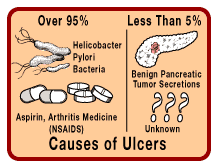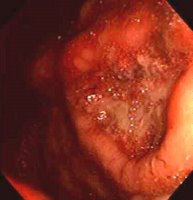Obesity & Homeopathy
 This is a condition of excessive accumulation of fat in fat depots. This is an important nutritional disorder occurs mainly in the rich communities of the world.
This is a condition of excessive accumulation of fat in fat depots. This is an important nutritional disorder occurs mainly in the rich communities of the world.Causes of Obesity:
Age: Present in all age group but more common in middle aged persons.
Sex: According to the Government White Paper on public health, 23% of men and 25.4% of women are obese.

Eating habits: The main causes of obesity are: overeating and/or eating the wrong kinds of food.
Hereditary Factor: Family history for obesity may be positive in majority of cases.
Physical activity: It is very common in persons with sedentary habit than in persons with active habits.
Psychological factor: As a result of emotional instability habit of overeating may develop and it leads to obesity.
Economic background: In developing countries it is common amongst the rich who consumes lots of protein, fat and carbohydrate in their diet and having sedentary habits due to luxurious life whereas in fully developed countries it is more common in lower-socioeconomic groups.
Endocrinal causes: In cases of hypothyroidism, Cushing’s syndrome, Adiposogenital dystrophy etc, there may be obesity.
Pregnancy: During pregnancy a woman may develop adiposity increasing the body weight to about 4-5 kg and this may goes on increasing in subsequent pregnancy due to lack of proper knowledge and carelessness.
The liver is very important for processing nutrients consumed in the diet and sending them on to the rest of the body. Abnormal processing of glucose or lipids in the liver contributes to problems of type 2 diabetes and atherosclerosis, and fatty liver disease often is seen in people who are obese or suffer from insulin resistance. The liver is also thought to play a key role in controlling the risk of heart disease.
Genetic factors: In prader-willi syndrome, Laurence-Moon-Biedi syndrome obesity develops.
Hypothalamic syndrome: Lesions in the hypothalamus may give rise to polyphagia and subsequent obesity.
Criteria for obesity:
1. Body weight more than 20% above the ideal body weight.
2. Ponderal index (ponderal index= height in inches divide by cube root of weight in lb) less than 12.
3. A fatfold thickness greater than 2.5 cm at the tip of scapula in males or mid triceps region in females.
Clinical Symptoms:
The body weight progressively increases and gradually the contour and configuration of the body is altered. Fat is uniformly distributed all throughout the body but in some cases like Cushing’s syndrome it may be distributed in the head, neck, trunk and shoulder and spare the legs (buffalo type of distribution).
As the body becomes heavier the movements are slow and due to low vital capacity slightest exertion may give rise to dyspnoea.
Sometimes the ventilation may be very much reduced due to high position of the diaphragm. This is called obesity- hypoventilation syndrome or characterized by periodic breathing, hypoxia, cyanosis, respiratory acidosis, leading to pulmonary hypertension, right ventricular hypertrophy (enlargement of right ventricles) and failure.
As fat has some insulating effect there may be defective heat loss and this will add to much discomfort during summer months.
There may be menstrual disturbances in females.
Patient will also have difficulty in sitting in squatting position, getting up or sitting in a chair or a vehicle.
Gradually some patients may be completely crippled and leads a vegetative existence and cannot do any thing without the assistance of somebody.
Complications:
1. Mechanical: Due to heavy weight of the body, weight bearing joints, e.g. knee, ankle, hip and lumber spine will develop osteoarthritic changes. There may be abdominal hernia, hiatus hernia, varicose veins, flat feet etc.
2. Infection: Due to exaggeration of skin creases cleanliness cannot be maintained and so fungal or other infections in these sites are very common.
3. Cardiovascular: Hypertension and atherosclerosis may develop. There may be angina pectoris, cardiac failure in middle aged individuals.
4. Metabolic: Diabetes, atherosclerosis, hyperlipidemia, cholesterol stones, gout etc may occur.
5. Psychic complications: Different psychosomatic problems may develop in these individuals.
 6. There may be hazards during pregnancy and surgical procedures.
6. There may be hazards during pregnancy and surgical procedures.7. There may be unexplained increase in certain type of cancers particularly of gall bladder, colon, endometrium and breast.
Life expectancy:
This is considerably lower in obese patients in comparison to a non obese person of the same age group.
Treatment:
A. Diet control: A balanced diet suitable for the expected weight of the patient should be given. This reducing diet will aim at negative balance of some of the calories. Diet should contain adequate protein but less fat and carbohydrates should be reduced. A 1000 Kcal diet may be given containing 100gms of carbohydrates, 50gms of proteins, and 40gms of fat. Alcohol should be avoided. Minerals, vitamins, water and salt should not be restricted.
B. Exercise: Physical exercise must be encouraged and its value should not be underestimated.
C. Drugs: Appetite suppressants are mainly used. To speed up the metabolism sometimes thyroid hormones may be used.
D. Dieting or fasting may be helpful sometimes.
E. Surgery: For localized adiposity, surgery may be helpful. Surgical procedures were grouped into gastric banding, gastric bypass, gastroplasty, biliopancreatic diversion or duodenal switch, and other procedures.
• Roux-en Y procedure—reduces the size of the stomach, creating a feeling of fullness (satiety); vomiting is the most common side effect
• Liposuction—removes fat deposits from specific body areas; weight gain is more likely in other areas of the body after the procedure
F. Yoga: There are some asana which are very effective in weight reduction like sukhasana, stretching of shoulders, surya namaskar, ardha matsyendrasana, tadasana, Fish Pose (Matsyasana), savasana, kapalabhati, anuloma viloma, etc.
Homeopathic Treatment:
Calcarea carb
It is used in person with excessive perspiration and who becomes hungry soon after eating; overeating and inactive digestive system; indigestion with craving for indigestible things. Excessive perspiration with little exertion, mainly on the upper part of the body.
Cinchona offIt is used in obesity to reduce ravenous appetite; indigestion after taking raw fruits and vegetables.It is indicated in persons who are though overweight but they are very weak internally.
LycopodiumObesity which arises due to disturbed liver and digestive functions; to decrease the craving for sweets; loss of appetite;Indigestion with flatulence in the lower abdomen; very hungry but feels full after a few bites.
Thyroidinum
Obesity arises due to thyroid dysfunction; This remedy is a powerful diuretic and is very useful in myxodema and various types of edema.
Calotropis GiganteaThis medicine is used to reduce the fat without decreasing the weight i.e. flesh will be decreased, the muscles will become harder and firmer. Heat in stomach is a good guiding symptom.
Antim Crude
This medicine is used in persons having the tendency to become fat mainly due to overeating and indigestion with white coated tongue.
Phytolacca berryThis medicine is commonly used as a patent medicine for weight reduction.
Fucus vesiculosus
It is given after giving Calcarea Carbonica. It should be given in mother tincture. It is very effective in cases of indigestion, obstinate constipation and flatulence. It is very effective in people with enlarged thyroid glands.
Graphites
Obesity in fair, fatty & flabby females with delayed menstruation. It is indicated in persons who are generally constipated and who have skin trouble.
Esculentine & Phytoline
These are two different remedies used for reduction of fat. These medicines are given in tincture form.
Other homeopathic medicines are amm-carb, amm-mur, iodium, argentum nit, coffea cruda, capsicum, ferrum phos, ignatia, kali carb,kali bi chromicum, staphysagria,aurum met, Carlsbad, nat mur, sulphur,ferrum met, thuja occ, etc that can prove useful in a case of obesity






